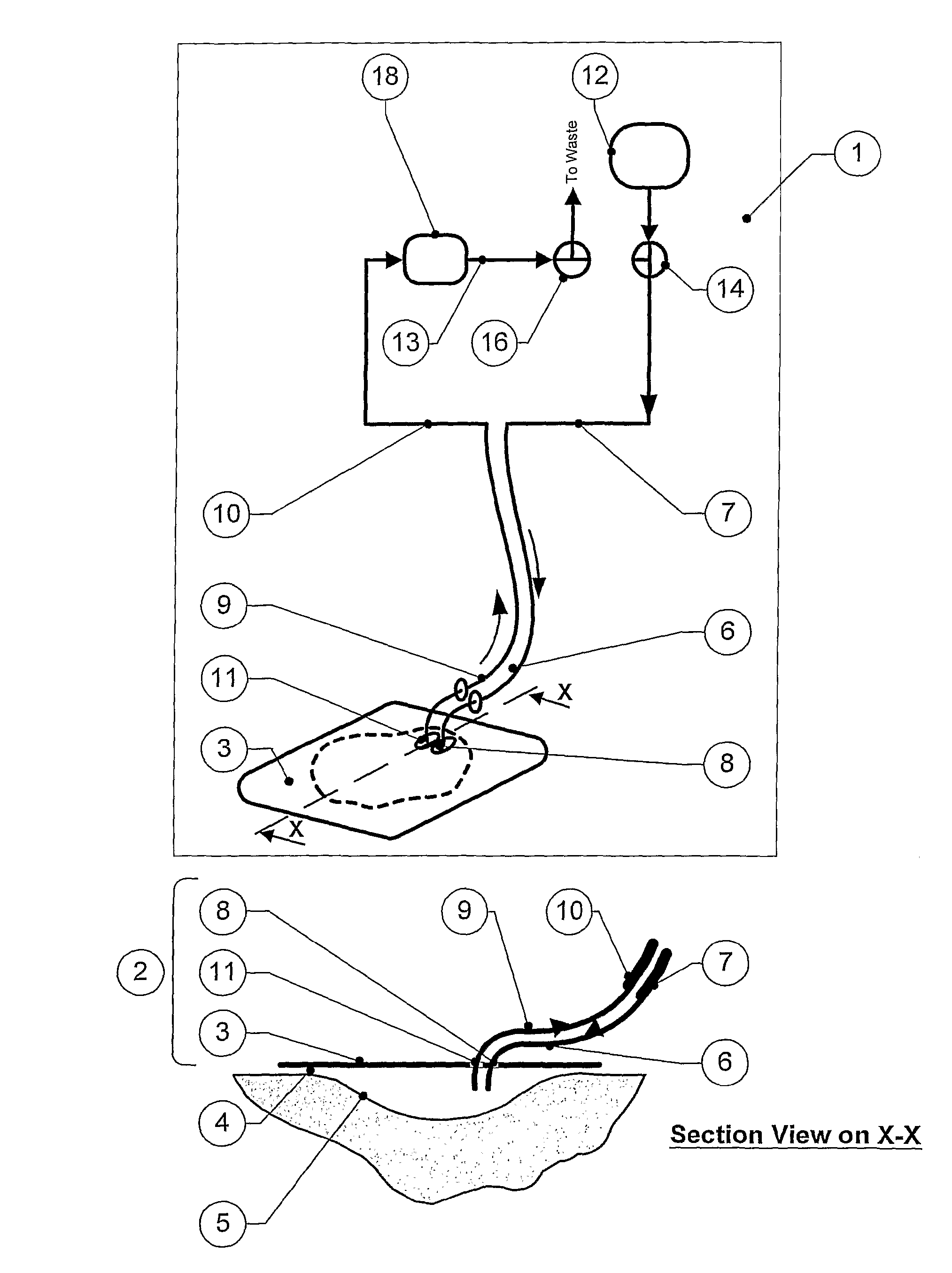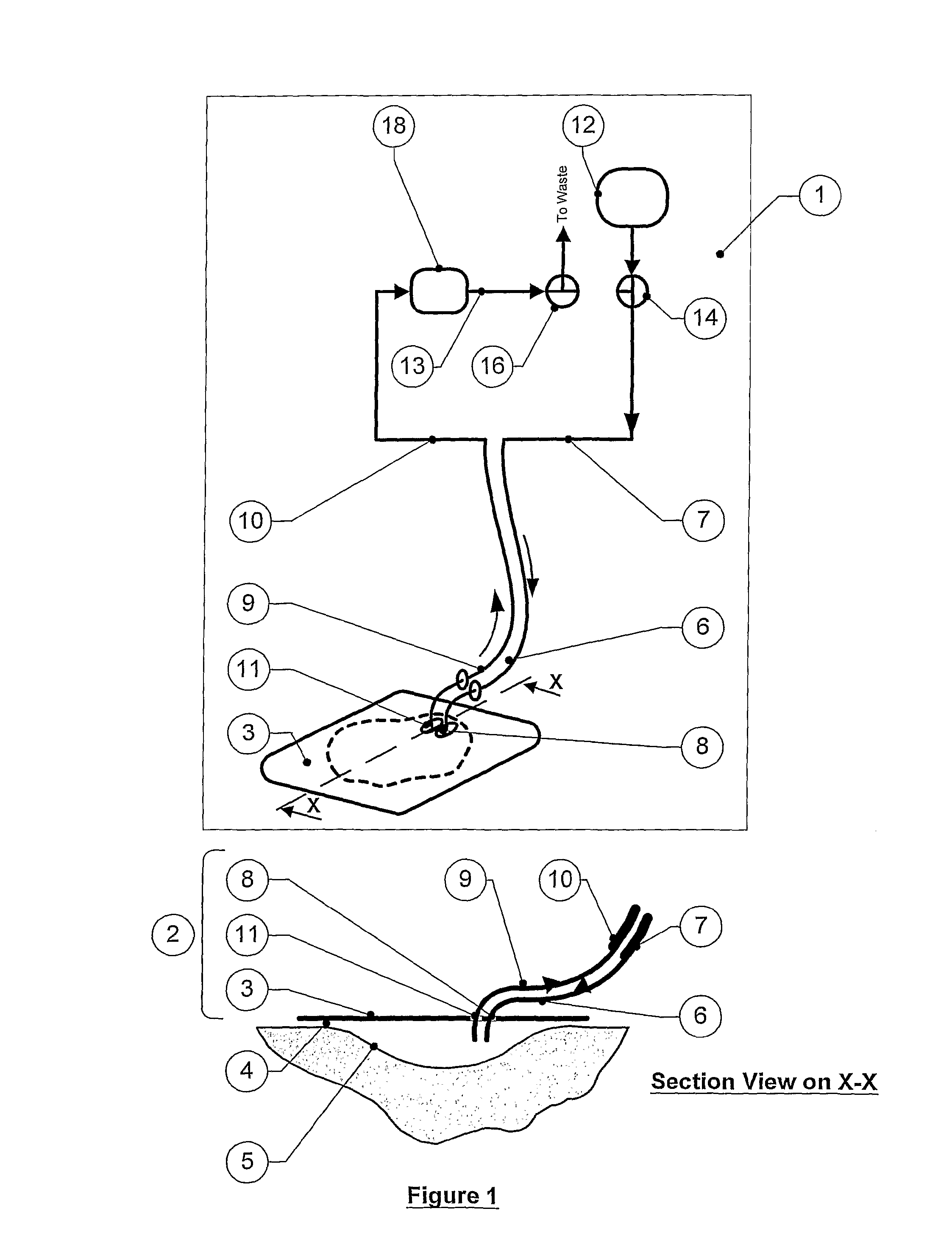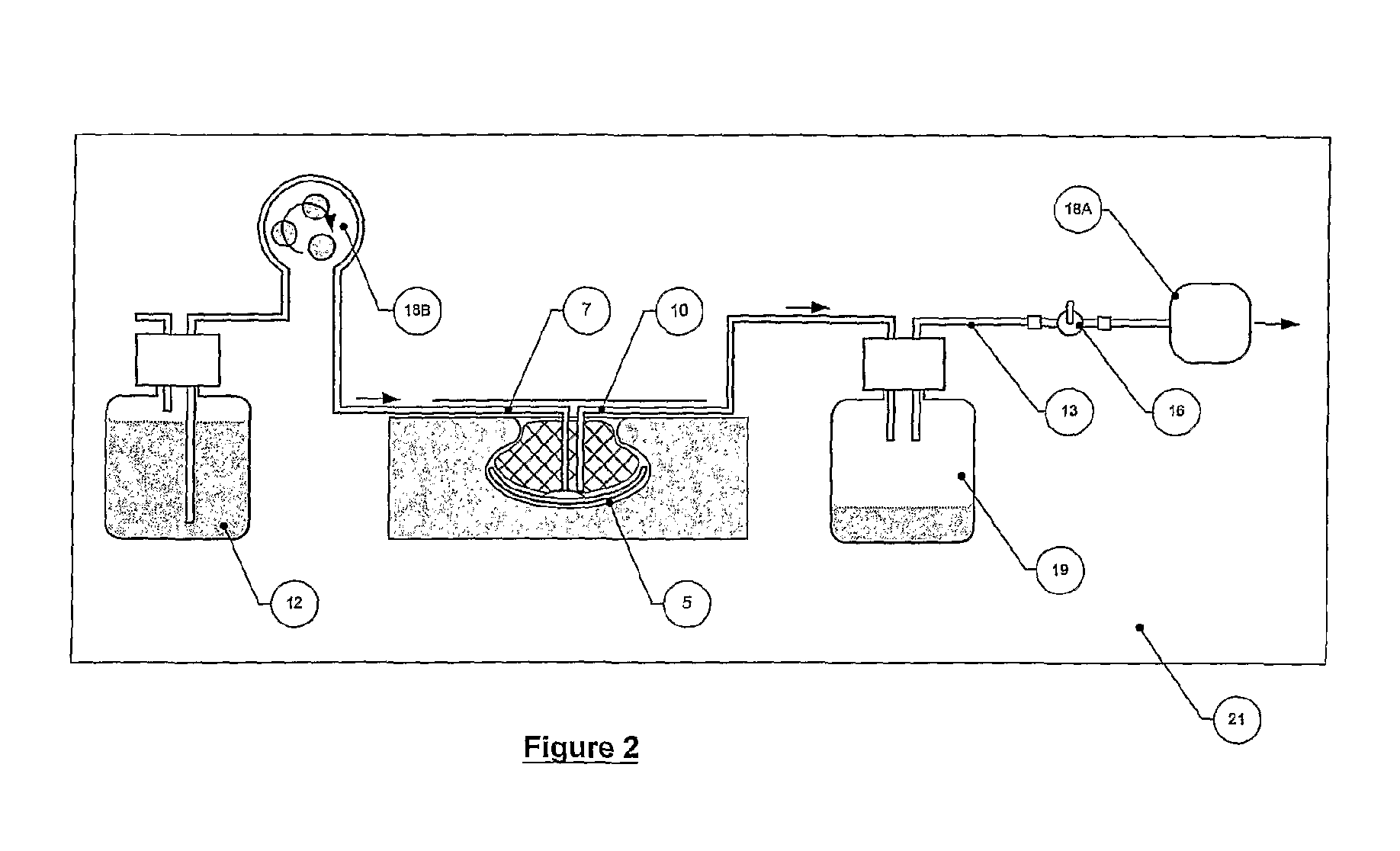Wound dressing apparatus and method of use
a wound dressing and apparatus technology, applied in the field of wound dressing apparatus and medical wound dressing, can solve the problems of relatively little beneficial materials involved in wound healing, cytokines, growth factors, cytokines, etc., and achieve the effect of convenient handling and better rigidity
- Summary
- Abstract
- Description
- Claims
- Application Information
AI Technical Summary
Benefits of technology
Problems solved by technology
Method used
Image
Examples
example 1
Removal of Wound Proteins and Derivatives with A Two-Pump Apparatus
[0546]In this example, a gelatine sheet laid in a cavity wound model represents wound proteins and derivatives to be removed by the two-pump apparatus. The dressing is essentially identical with that in FIG. 18, i.e. it comprises a circular backing layer and a lobed chamber in the form of a deeply indented disc much like a multiple Maltese cross or a stylised rose, defined by an upper impervious membrane and a lower porous film with apertures that deliver the irrigant fluid directly from the wound bed over an extended area.
[0547]A two-pump system was set up essentially as in FIG. 2, with
[0548]an irrigant dispensing bottle—1000 ml Schott Duran, connected to a peristaltic pump (Masterflex) for irrigant delivery, and associated power supply and supply tube,
[0549]a diaphragm vacuum pump (Schwarz) for aspiration, and associated power supply and offtake tube, connected to a vacuum vessel (aspirate collection jar)—Nalgene 1...
example 2
The Combination of Simultaneous Fluid Flow (Irrigation) and Aspiration (Under Reduced Pressure) on Wound Bed Fibroblasts Compared with the Exposure of Wound Bed Fibroblasts to Repeated Fill-Empty Cycles of Fluid Flow and Aspiration
[0580]An apparatus of the present invention was constructed essentially as in FIG. 30, which is an apparatus where an irrigant is delivered continually to the wound bed and the resultant wound exudate / fluid mixture is at the same time continually aspirated from the wound. Alternative systems are known where the wound is subjected to repeated iteration of a cycle of fluid delivery followed by a period of aspiration under reduced pressure.
[0581]The apparatus comprised a surrogate wound chamber (Minucells perfusion chamber) in which normal diploid human fibroblasts were cultured on 13 mm diameter (Thermanox polymer) cover slips retained in a two part support (Minucells Minusheets). Tissues present in the healing wound that must survive and proliferate were re...
PUM
 Login to View More
Login to View More Abstract
Description
Claims
Application Information
 Login to View More
Login to View More - R&D
- Intellectual Property
- Life Sciences
- Materials
- Tech Scout
- Unparalleled Data Quality
- Higher Quality Content
- 60% Fewer Hallucinations
Browse by: Latest US Patents, China's latest patents, Technical Efficacy Thesaurus, Application Domain, Technology Topic, Popular Technical Reports.
© 2025 PatSnap. All rights reserved.Legal|Privacy policy|Modern Slavery Act Transparency Statement|Sitemap|About US| Contact US: help@patsnap.com



